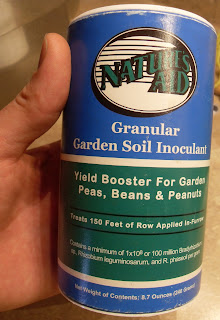After growing 3 different purple sweet potato varieties this year, plus an experimental stint with a Stokes Purple sweet potato, I am happy to give a description of each of the purple sweet potato varieties I have grown, along with their growing characteristics.
 |
| My son finding an orange sweet potato |
 |
| Taste Testing to inform descriptions - My children exhibit a lot of potential in taking pictures |
All Purple:
Long roots are often produced in locations of excess water with tubers often
developing deep in the ground. Good yields of mildly sweet potatoes with a
consistently purple flesh.
Alabama Purple or
Purple Delight: Mostly top setting tubers of
variable shape and size. Heavy yields of smooth textured savory tubers with
purple flesh.
Dingess Purple:
Top setting tubers of very marketable shape and size. Moderate yields of tubers
with a rich, complex flavor and dark purple flesh.
Currently, if you live in Tucson and would like to buy any of these sweet potatoes you can contact me through this Craig'slist post. All proceeds go to my garden.
Currently, if you live in Tucson and would like to buy any of these sweet potatoes you can contact me through this Craig'slist post. All proceeds go to my garden.
 |
| I grew a Stokes Purple Sweet Potato (starting in August or September) |
In summary – I would have
to say that the Purple Dingess are my all-time favorite, despite the meager 15
pound yield. Harvesting and working with the Dingess Purple Potatoes was much
easier than working with the All-Purple or Purple Delight tubers. It would be
well worth it to try to cross Dingess purple with another purple variety, such
as Alabama, to seek to increase yield.
 |
| My Sweet Potato vines in November |
 |
| Sweet Potato Vines have problems staying on my property |
The final results of
my 2013 harvest are 165 pounds of mostly purple sweet potatoes from my 7’ by 15’
summer garden bed, meaning the garden produced more than 1 pound of sweet
potatoes per square foot, in addition to everything else produced this last
summer. That being said, in the long term I am really seeking for quality over
quantity. I would much rather have a tasty Delicata squash over a big poor-tasting
squash. I am very grateful for such a good harvest, though I will definitely be
changing some things this next year. Two of the things I will be changing for
next year include planting my slips later in May and applying more EM-1
throughout the season to see how it affects my sweet potato vines.
 |
| Purple Sweet Potatoes make great pie. |
EM-1: My experience
with EM-1 was that it did nothing for any of my garden plants – including the
legumes. The exception to this was with my sweet potatoes. EM-1 greatly
increased my sweet potato yields. I highly recommend using EM-1 as an inoculant
for sweet potato slips to increase yields. It is worth every penny if you are
really into growing sweet potatoes. I diluted my EM-1 in purified
non-chlorinated water and sprayed it on my young plants until the ground was
soaked. The results in both vine and root growth were impressive. In fact, I
would warn gardeners that the growth of EM-inoculated sweet potato vines is so
vigorous that, in crowded conditions they will grow several feet off the
ground.
 |
| EM-1 dramatically improves sweet potato growth |
I am currently doing some research on culturing my own shelf-stable EM
with the same characteristics as the EM-1 that I currently use. I will gladly
share any success I experience from my own experience brewing activated EM - as
I have time to do so. Another interesting thing is that, from some of the research I found, the Anthocyanins contained in Purple sweet potatoes can better retain their
health benefits and color in storage with the presence of lactic acid (7%), which
happens to be one of the ingredients in EM-1.


























